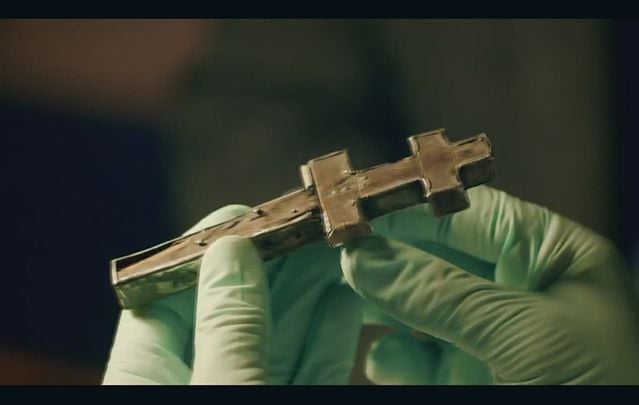A relic of the “True Cross” on which Jesus was crucified has been venerated in Waterford City for over 1,000 years, allegedly given to the king of Munster by Pope Paschal II in the 11th century.
However, an Oxford University radiocarbon expert, professor Tom Higham, has now carried out an examination of the wooden cross using Oxford's radiocarbon accelerator unit.
He did so at the behest of CNN, who ran a series called “Finding Jesus” over several nights last week.
His findings will deeply disappoint those who venerate the sacred item. The radiocarbon accelerator dates the relic not to the time of Christ but over one thousand years later to the 11th century.
Higham stated he was “disappointed” by the revelation but was hopeful that other relics might date back to the beginning of Christianity.
Candida Moss, Professor of New Testament and early Christianity at Notre Dame, was not surprised at the findings.
“There are churches all over the world that claim to have fragments or splinters of the true cross,” she said. “These aren't being carbon dated and there are a few reasons why. First, carbon dating is expensive, and your average church doesn't have the funds for this kind of endeavor. Second, carbon dating is seen as intrusive and a little destructive.
“Even if only about 10 milligrams of wood are needed, you're still chipping away at a holy object. This isn't something that churches like to do, especially as – and this leads me to my third point – almost all carbon dating tests end up discrediting the relics that are being tested. So, it's not in the best interest of the Roman Catholic and Eastern Orthodox Churches that claim to possess relics to have them tested,” she told CNN.
Sampling the Waterford Cross“The procedure should leave little perceptible trace of damage in theory, but it’s a nerve-wracking business.” In this sneak peek, experts attempt to safely extract a sample of wood from the Waterford Cross, an Irish relic that claims to hold a piece of the True Cross itself. Will they be successful?Find out when you tune in to the next episode of #FindingJesus this Sunday at 9p ET/PT on CNN. http://cnn.it/1DaeDXk
Posted by Finding Jesus on Friday, March 27, 2015
The Waterford Cross, according to local experts, was a gift to Muircheartach Ó Briain, King of Munster from Pope Paschal II in the year 1110. Muircheartach could well have presented it to Archbishop Malchus the following year, in 1111, on his consecration as Archbishop of Cashel.
The relic is composed of five separate pieces of wood identified as cedar and is enclosed in silver. On the front is a Latin inscription which identifies the wood as a piece of the True Cross and this inscription has been dated to about 1110. While the inscription matches the radiocarbon date it had long been held the cross itself was much older.
Following the resignation of Malchus as archbishop of Cashel, the relic of the True Cross remained in the cathedral in Waterford. It may have been encased in a larger cross or crucifix on the main altar. During solemn religious processions this crucifix with the relic inside would have been carried through the streets of Waterford by the bishop, accompanied by the clergy of the diocese.
The legend of the True Cross began with the Empress Helena, mother of Constantine, the first Christian Emperor of Rome, who traveled to the Holy Land in 326–28, founding churches and establishing relief agencies for the poor. Historians Gelasius of Caesarea and Rufinus claimed that she discovered the hiding place of three crosses that were believed to be used at the crucifixion of Jesus and of two thieves, St. Dismas and Gestas, who were executed with Jesus, and that a miracle revealed which of the three was the True Cross.




Comments